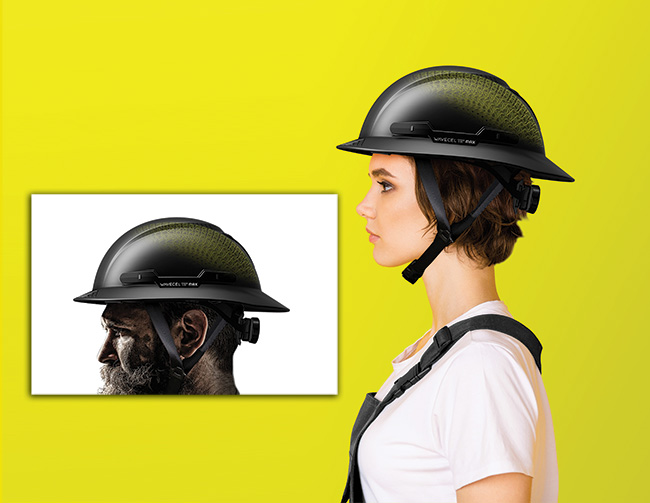Mitigating safety risks in waste and recycling environments.
By Steve Madey and Michael Bottlang
Ensuring the safety of workers day-in and day-out is no small undertaking. Accidents are bound to happen, and it is the role of safety managers to mitigate the contributing risk factors. From keeping sites up to code, providing proper training, keeping a close eye on equipment options, and more, the daily responsibilities of a safety manager are critical to the success of the project and the company.
Onsite safety and appropriate management practices can result in a smooth-running team. Without it, the result of a preventable action could end in a write-up or fine, but the worst-case scenario could mean serious injury or even loss of a valued employee.
Safety Risks in Waste and Recycling Environments
Refuse and recyclable materials collections remains one of the deadliest occupations in the U.S., according to reports over the years from the U.S. Department of Labor’s Bureau of Labor Statistics (BLS). While fatalities in the industry are on the decline, this job is still in the top 10.
Waste and recycling companies are prioritizing safety first and foremost, including head safety. The day-to-day environment presents various hazards that can be challenging to avoid or predict when it comes to head injuries. Risks often include moving vehicles, improperly secured material bales, falling items, and worker slips or falls.
Trips, slips, falls, and falling hazards can cause varying degrees of head injury, from a small bump or bruise to a concussion or traumatic brain injury. While a broken bone can be reset and eventually heal, a brain injury is one that is irreversible.

Photos courtesy of WaveCel.
4 Ways Management Can Help Mitigate Safety Risks
There are many ways management can work to mitigate safety risks and improve the wellbeing of their teams. We have detailed our top suggestions to help managers improve their worksites.
#1: Proper Training
Pre-job as well as in-person, on-the-job training is critical to a worker’s overall success in their role. Plus, proper training ensures workers are aware of best practices. In addition to initial training sessions, continuing to check in with routine training sessions and updates is a great practice to maximize everyone’s understanding of how they can keep themselves and those around them safe.
#2: On- and Offsite Management
Managers on project sites should be fully prepped to assess any risks and know the best course of action to take to remedy any issues or violations. Having competent management in place can help prevent accidents and injuries before they happen. The wider management at companies should also be prepared to jump into action and fully understand the ins-and-outs of safety protocols.
#3: Following Established Guidelines
Rules are not meant to be broken. Organizations like the Occupational Health & Safety Administration (OSHA) have established guidelines for a variety of industries to better protect those involved. Managers should ensure their site is up to code and meets all regulations.
#4: Investing in and Researching the Right Gear
The greatest investment safety managers can make is in the right gear to better protect and support their teams. Personal protective equipment is required on jobsites and there are many options on the market to choose from. Safety managers should take the time to research the options, trying out samples (when possible) and thoroughly reading reviews ahead of selecting the gear that will protect their employees. With new technologies coming to the market every day, it is critical to evaluate all available options on the market to find gear that will best protect and meet the needs of workers.
Working from the Top Down
Waste and recycling environments present unique risks to consider. With accidents that can jeopardize the safety of workers, it is critical to keep safety at the forefront of everyone’s mind. Working from the top down to ensure necessary precautions are taken to mitigate the risks to those doing their job and educate everyone on the importance of workplace safety is essential to the continued success of the whole company.
Dr. Steve Madey is a co-founder of WaveCel and a board-certified hand and microvascular surgeon who came to Portland after medical school at Columbia and a residency at the University of Iowa. Madey’s skill and focus have made him one of the most sought-after surgeons in the Northwest, and his collaborations with Michael Bottlang at the Legacy Biomechanics Laboratory have produced devices that have saved hundreds of lives. Steve can be reached at [email protected].
Dr. Michael Bottlang is co-founder of WaveCel and a biomechanical engineer. He has subsequently focused on improving the treatment of orthopedic trauma patients. His inventions for treating fractures of the pelvis and chest wall have changed the standard of care in over 40 countries. He has been funded by the US National Institute of Health for his groundbreaking research and innovative technology on helmet safety. At the Legacy Biomechanics Laboratory in Portland, Oregon, Bottlang has overseen the creation of the state-of-the-art Helmet Impact Testing (HIT) Laboratory. Michael can be reached at [email protected].
References
www.bls.gov/iif/oshwc/cfoi/cftb0340.htm
www.cdc.gov/traumaticbraininjury/pubs/tbi_report_to_congress.html#:~
:text=Incidence%20and%20Prevalence%20of%2Traumatic,million%20Americans%20sustain%20a%20TBI
